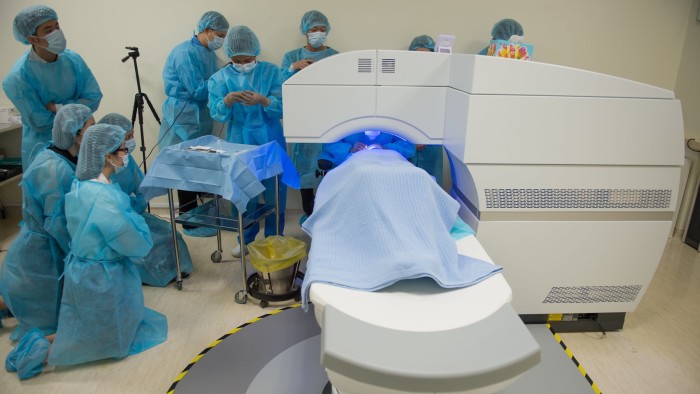Eye surgery: lasers are with us, robots on their way

Simply sign up to the Health sector myFT Digest -- delivered directly to your inbox.
The surgery is fiddly. Making tiny, precise incisions in the inside of the eye requires extreme skill. Surgeons need to slow down their pulse and time movements between heart beats to avoid the smallest of hand tremors. Today, lasers are the most frequently used technology in surgeries ranging from cataract operations to corrective vision procedures.
Among the most sophisticated is the ultrafast femtosecond laser. It is used as an alternative to other manual techniques in the tearing of the eye’s lens capsule in cataract surgery, or cutting a corneal flap during so-called Lasik eye surgery. Surgical methods that involve lasers are also being improved to provide better control. A 3D visualisation system, designed by Novartis subsidiary Alcon, helps guide surgeons through the procedures of retinal operations.
Florida-based Lensar’s laser is used for corneal incisions and cataract operations. Lensar says it uses augmented reality, similar to the Pokémon Go game that overlays characters on to the real world, to reconstruct a detailed 3D model of the anatomy of each patient’s eye to help in preparation for operations.
The first robotic operation inside the eye took place recently at the University of Oxford’s John Radcliffe Hospital. Once robotic surgery was not feasible at the microscopic level required but, in September, Oxford surgeons used a remotely controlled robot to lift a membrane 100th of a millimetre thick from the retina at the back of a patient’s right eye.
To counter the surgeon’s tremors, the operation took place through a hole less than 1mm in diameter. Dutch company Preceyes built the robot, the like of which may in the future help speed up cataract surgery and perform tasks that human hands cannot do, such as injecting drugs or stem cells into retinal veins, which are thinner than human hair.
Comments